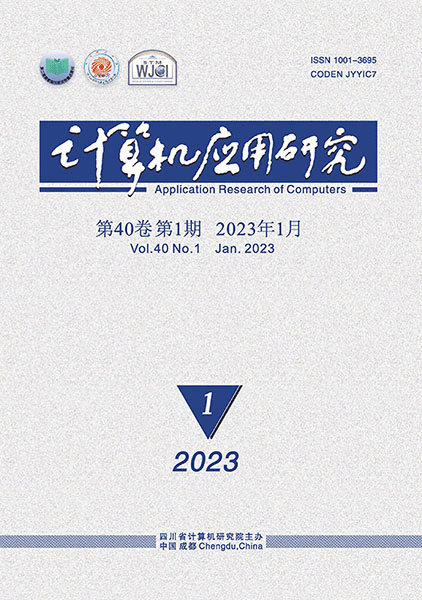Knowledge tracing model of temporal and spatial correlation fusion
Knowledge tracing model of temporal and spatial correlation fusion
School of Computer Science, Yangtze University, Jingzhou Hubei 434023, China

摘要
Knowledge tracing aims to model the state of knowledge and ultimately predict the future performance of learners by describing exercises through the representation of concepts. However, in terms of the representation of concepts, the current research doesn't model the influence of historical knowledge concepts on the temporal relationship of the current concepts, nor does it describe the role of the spatial relationship between various concepts in the exercise. In order to solve these problems, this paper proposed a knowledge tracing model characterized by temporal and spatial correlation fusion. First of all, based on the degree of temporal correlation between concepts, it modelled the temporal effect of historical concepts from current concepts. Secondly, it modelled the spatial interaction between several concepts contained in the exercise to obtain the representation of knowledge points containing temporal and spatial information through the graph attention network. Finally, it used the above representation of concepts to derive the representation of the exercises, and generated the current state of knowledge through the self-attention mechanism. In the experimental stage, this paper compared the performance of the proposed model with the five relevant knowledge tracing models on four real datasets. The results show that the proposed model has better performance. In particular, compared to the five comparative models on the ASSISTments2017 dataset, the AUC and ACC are improved by 1.7%~7.7% and 7.3%~12.1%, respectively. At the same time, the ablation experiment proves the effectiveness of modeling the temporal and spatial correlation between concepts, and the training process experiment shows that the proposed model has certain advantages in the representation of concepts and the modeling of their interaction relationships. The application examples can also show that the model has better practical results than other knowledge tracing models.
关键词
基金项目
国家自然科学基金资助项目(62077018)
国家科技部高端外国专家引进计划资助项目(G2022027006L)
湖北省自然科学基金资助项目(2022CFB132)
湖北本科高校省级教学改革研究资助项目(2023273)
出版信息
DOI: 10.19734/j.issn.1001-3695.2023.09.0414
出版期卷: 《计算机应用研究》 Printed Article, 2024年第41卷 第5期
所属栏目: Algorithm Research & Explore
出版页码: 1381-1387
文章编号: 1001-3695(2024)05-015-1381-07
发布历史
引用本文
张凯, 付姿姿, 覃正楚. 时空相关性融合表征的知识追踪模型 [J]. 计算机应用研究, 2024, 41 (5): 1381-1387. (Zhang Kai, Fu Zizi, Qin Zhengchu. Knowledge tracing model of temporal and spatial correlation fusion [J]. Application Research of Computers, 2024, 41 (5): 1381-1387. )
关于期刊

- 计算机应用研究 月刊
- Application Research of Computers
-
刊号
ISSN 1001-3695
CN 51-1196/TP
《计算机应用研究》创刊于1984年,是由四川省科技厅所属四川省计算机研究院主办的计算技术类学术刊物。
《计算机应用研究》瞄准本学科领域迫切需要的前沿技术,及时反映国内外计算机应用研究的主流技术、热点技术及最新发展趋势。主要刊载内容包括本学科领域高水平的学术论文、本学科最新科研成果和重大应用成果。栏目内容涉及计算机学科新理论、计算机基础理论、算法理论研究、算法设计与分析、区块链技术、系统软件与软件工程技术、模式识别与人工智能、体系结构、先进计算、并行处理、数据库技术、计算机网络与通信技术、信息安全技术、计算机图像图形学及其最新热点应用技术。
《计算机应用研究》拥有众多高层次读者、作者,读者对象主要为从事计算机学科领域高、中级研究人员及工程技术人员,各高等院校计算机专业及相关专业的师生。多年来《计算机应用研究》的总被引频次及Web下载率一直名列本学科同类学术刊物前茅,所刊发的学术论文以其新颖性、学术性、前瞻性、导向性、实用性而备受广大读者的喜爱。
收录和评价
- 第二届国家期刊奖百种重点期刊
- 中国期刊方阵双效期刊
- 全国中文核心期刊(北大2023年版)
- 中国科技核心期刊
- 中国科学引文数据库(CSCD)来源期刊
- RCCSE中国核心学术期刊
- 中国计算机学会会刊
- 2020—2022年科技期刊世界影响力指数(WJCI)报告收录期刊
- 中国科技期刊精品数据库全文来源期刊
- 中国学术期刊综合评价数据库来源期刊
- 《中国期刊网》《中国学术期刊(光盘版)》来源期刊
- 2017—2019年中国国际影响力优秀学术期刊(自然科学与工程技术)
- 中国精品科技期刊顶尖学术论文(F5000)项目来源期刊
- 《中国工程技术电子信息网》《电子科技文献数据库》来源期刊
- 英国《科学文摘》(INSPEC)来源期刊
- 《日本科学技术振兴机构数据库》(JST)来源期刊
- 俄罗斯《文摘杂志》(AJ, VINITI)来源期刊
- 美国《艾博思科学术数据库》(EBSCO)全文来源期刊
- 美国《剑桥科学文摘(自然科学)》(CSA(NS))核心期刊
- 波兰《哥白尼索引》(IC)来源期刊
- 美国《乌利希期刊指南(网络版)》(Ulrichsweb)收录期刊





